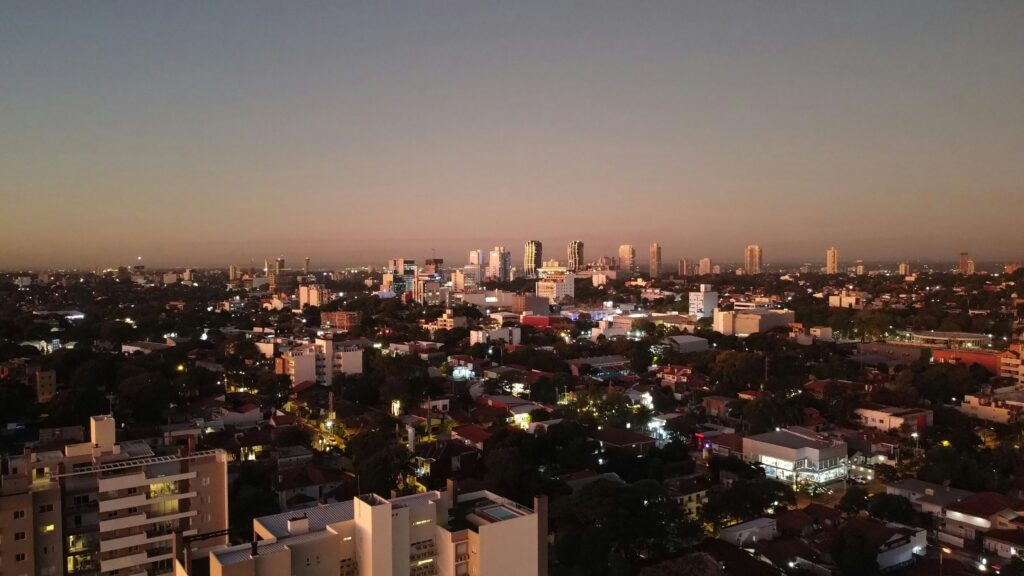
Nothing can pull you into a place quite like its public transportation. The sounds, the sights, the people—it’s all part of the experience. When I first stepped onto a bus in Asunción, I felt an electric mix of excitement and anxiety. Would I navigate the system safely? Would I find my way? These questions popped into my head, and I figured I wasn’t alone. Let’s break down how to travel safely on Paraguay’s public transportation and ensure you enjoy every moment.
Why Focus on Safety?
Safety matters. Nobody wants their adventure overshadowed by worries. Paraguay is an up-and-coming destination, known for its vibrant culture and stunning landscapes. However, understanding the local transit system can be tricky, especially if you’re not fluent in Spanish. Here’s why keeping safety in mind during your travels is crucial.
Understanding the Local Transit System
First, let’s talk about how public transportation works here. Buses are the main mode of travel, and they cover almost every nook and cranny of the cities. They’re affordable and get you where you need to go, but grasping basic routes and schedules can feel overwhelming.
I recommend downloading a local map app or asking for a physical map at your hotel. While it may seem basic, knowing your routes can make a huge difference. If you plan ahead, you can avoid getting lost or caught in unsafe areas.
Assessing Your Route
Here’s the thing: not all routes are created equal. Some neighborhoods are safer than others. Take a moment to research your destination before hopping on a bus. If you’re unsure, last-minute decisions can lead to unnecessary stress.
Popular Routes and Areas
Identifying popular and tourist-friendly routes can save you headaches. For example, the bus route from the city center to the historic district is often bustling. More people usually mean more eyes on the street, which can deter petty crime.
Another example is the route to the Ñu Guasu Park, great for a relaxed day out. The scenery is beautiful, and during the day, it’s quite safe. Public places like parks and markets are perfect for spotting friendly locals who are usually willing to help you find your way.
Staying Safe on the Bus
Now, let’s talk about actual travel. When you get on a bus, keep your belongings close. I’ve seen it happen more than once where a distracted traveler loses something important. Use a secure bag that you can keep on your lap or in front of you.
Tips for Securing Your Belongings
Here are some quick tips:
- Always wear a crossbody bag.
- Use a zipped pocket for valuables.
- Bring a small backpack instead of a larger one.
Don’t flash your phone or camera around too much. I’ve learned that staying low-key is one of the best ways to avoid unwanted attention.
Timing Your Travel
Timing plays a significant role in safety. Nighttime transit can be riskier, so if you can, try to travel during daylight hours. The atmosphere changes after dark, and knowing your surroundings is vital.
Staying in Touch
If you have a local SIM card, make sure your phone is fully charged. A charged phone can help with navigation and can be your lifeline in an emergency. Just know that if something doesn’t feel right, trust your gut and change your plans. There’s always another bus coming.
Engaging with Locals
Here’s the problem: language barriers can make things challenging. But don’t let fear of language stop you. Locals can be your best resource. If you’re unsure about a bus route, just ask. Most people appreciate the effort and will do their best to help you.
Simple Spanish Phrases
Learning a few basic phrases can work wonders. Here are a couple to get you started:
- “¿Dónde está la parada de autobús?” (Where is the bus stop?)
- “¿Cuánto cuesta el pasaje?” (How much is the fare?)
Even a small effort goes a long way, and you might even make some friends!
Emergency Prep
Despite all your planning, things can go sideways. So, it’s smart to have a backup plan. Note down emergency numbers and keep them handy.
What to Do in Case of an Emergency
If something goes wrong, try to stay calm. Seek out bus staff or a local shop to help you. Most cities have police presence, especially in tourist areas. They are usually friendly and willing to assist.
And don’t forget: registering with your country’s embassy or consulate can provide an extra layer of security during your travels.
Final Thoughts
Traveling in Paraguay can be a fantastic experience, especially if you plan your public transportation wisely. Keep safety at the forefront, stay aware of your surroundings, and don’t hesitate to reach out to locals for help. These small steps can lead to a more enjoyable journey.
So, pack your bags, grab your map, and set out on this adventure. Adventure is out there, and with a little preparation, you can soak in every bit of it!
**Related Reading:** – [Related: How to Plan a Solo Trip on a Budget] – [Related: Top Destinations for First-Time Solo Travelers] **#SoloTravel #Exploring #Safety #Paraguays #Public #Transportation #Tourists #Guide #Secure #Travel**